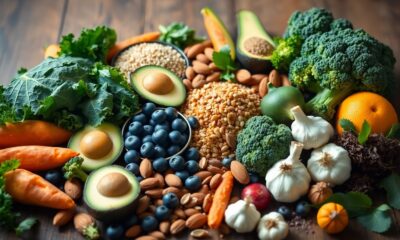Health & Society
Life and Drugs (part 2), The Cannabis
Cannabis is the most consumed substance in Europe by 15.1% of the population aged 15-34 with 2.1 % being daily cannabis users (EMCDDA European Drug Report June 2023). And 97 000 users entered for drug treatments related to cannabis use in 2021 and were involved in 25% of the acute toxicity presentations, usually mixed with other substances. Cannabis is with alcohol the gateway to drugs for young people leading to the universe of drugs.
If there was a government that had an interest in corrupting its governed, it would only have to encourage the use of hashish.
Artificial Paradises – Charles Baudelaire (1860)
Cannabis is a dioecious plant (plant female and plant male). Cannabis has 3 subspecies: Cannabis sativa sativa L., is 1.80 m to 3 m high, with long fibers for industrial use (named as “hemp”), with a flowering time of 60-90 days; the smaller C. s. indica (1m), flowers more quickly 50-60 days and the C. s. ruderalis, a wilder type. France is the top hemp producer in Europe and third in the world.
From a drug use point of view, only the flowers of sativa and indica are interesting because richer in cannabinoids located in numerous small vesicles, the trichomes, more located around the flower for a protection against the predators in the context of food chain vs. species survival!
Initially the C. sativa was considered for its euphoric effects, producing the “high” while the C. indica produces a relaxation of the cerebral activity, creating an effect “stone”, which sticks. According to the UNODC, Morocco, in the Rif, is the world’s largest producer of psychoactive cannabis plants for the production of hashish (resin form) but since 2021 the culture is regulated.
The Cannabinoid substances were discovered in the 1960s in Israel by the team of Raphael Mechoulam. More than 113 substances have been isolated in the plant but the majority of the effects and their functions are still under study. They are all soluble in lipids, alcohols and organic solvents but almost insoluble in water.
There are 3 types of cannabinoids: – phytocannabinoids of the fresh plant; they are transformed under the action of heat, light, and during drying; – synthetic cannabinoids developed in the laboratory; – endocannabinoids: 8 are currently listed. They are produced by certain organisms, derived from fatty acids in cell membranes, they constitute the endocannabinoid system.
A) Among the phytocannabinoids (molecules with 21 carbon atoms): -CBG (Cannabigerol) is derived from cannabigerolic acid (CBGA), a combination in the plant of olivetolic acid and geranyldiphosphate. CBGA, which is acidic, is easily broken down into CBG with the loss of CO2. The CBG (less than 1% of the plant) is considered as the “cannabinoid strain” with a low boiling point (52°C) and therefore easily transformable! Should be non-psychotropic. -THC (TetraHydroCannabinol). Delta 9-THC is the psychotropic drug responsible for the euphoric high and its weaker psychotropic isomer, the Delta 8-THC. THC is derived from the non-psychoactive acid : THCA. -HHC (HexaHydroCannabinol-a hydrogenated THC) has also been isolated in small quantities in seeds and pollen, synthesized in 1947 by Adams Roger. Its psychotropic action is comparable to THC, it alters the perception of time. In 2023 HHC is already illegal in several EU countries (See also infra).
Let’s remember that unlike alkaloid psychotropic molecules as cocaine and morphine, the Delta 8-THC and Delta 9-THC are tricyclic terpenoid drugs. The cannabinoids are a class of lipophilic molecules, storing in fatty bodies including the brain (60% of lipids) and easily crossing phospholipid cell membranes. Thus, THC is detectable up to 14 days in the blood, 30 days in the urine and 3 months in the hair. -The famous CBD (Cannabidiol) which was discovered in 1940 is present in the plant. It also derives from the cannabigerolic acid (CBGA) but with a synthesis route different from the THC. The CBD oil can be extracted from the flowers either by cold pressing or by using cold carbon dioxide (CO2) or by chemical solvents (ethanol, butane,…) or by natural solvents (olive oil, coconut oil,…). CBD oil is the subject of important advertising and marketing campaigns praising its health benefits.
CBD was not considered addictive if it is pure, but in 2016 Merrick J. et al. had shown that in an acidic environment, CBD slowly transforms into Delta-9 and Delta-8 THC. And what is the gastric environment if not an acidic environment! Moreover, it has been shown by Czégény et al, 2021, that 25% to 52% of CBD used in e-cigarettes (temperature around 300 ° C) is transformed into THC. Similarly the works of Love C.A. et al, 2023, highlight the potential respiratory health risks for the users of CBD vaping products. There is also the idea of combining CBD and THC in therapeutic cases, with CBD attenuating the deleterious psychotropic effects of THC. Todd et al (2017) show that if a co-administration could be beneficial in the very short term, on the contrary it would have a potentiating effect of the THC in the long term.
CBD is the object of a powerful marketing network to the public. However, in June 2022 the EFSA (European Food Safety Authority Panel) considering the significant uncertainties and data gaps, concludes that the safety of CBD as a Novel Food cannot currently be established: there are insufficient data on the effects of CBD on the liver, gastrointestinal tract, endocrine system, nervous system and on people’s psychological well-being. NOTE: The semi-synthetic cannabinoids HHC (Hexahydrocannabinol) is already found in 20 European countries as ‘replacement for cannabis’ and also 3 new ones: the HHC-acetate, the HHcannabiphorol and the Tetrahydrocannabidiol all produced using the CBD extracted from low-THC cannabis (EMCDDA Report 2023). Their availability is raising concerns about the youth and public health and HHC is already illegal in several EU countries.
B) The synthetic cannabinoids are the most consumed such as Spices at the origin of suicides, the Buddha Blues, not expensive, equivalent to 95% of psychoactive substance, very popular with teenagers, circulates in colleges and high schools. Other names : Black Mamba, AK-47, Shooting Star, Yucatan, Moon Rocks,… Vaporized or ingested, the synthetic cannabinoids cause convulsions, cardiovascular and neurological disorders and psychosis. The peak of action is between 2 and 5 hours until 20 hours.
Manufactured from the 1960’s initially to search for receptors in the brain, they are lipophilic molecules of 22 to 26 carbons, having a higher binding affinity up to 100%, selective or not, for the same receptors as THC and the ones of the endogenous ligands. Thus we have 18 families listed in 2019 among which the CP (cyclohexylphenols), HU (the HU-210 a structural analog of THC is 100 times more powerful), JWH, AM, AB-FUBINACA, XLR, etc.
Studies of the Scientific Reports (2017, 7:10516), suggest that these synthetic cannabinoids exert serious side effects as well as proconvulsive properties (Schneir A.B. et al, 2012) where other authors show anticonvulsive effects in cases of severe epilepsy (Devinsky O. et al, 2016).
NOTE: The THC content of festive (and illegal) cannabis is typically 15% up to 30% compared to 0.2-0.3% of the original plant before genetic manipulation. Synthetic THC is 100 times more potent and produces zombies.
C) The EndoCannabinoid System (ECS) is one of the most important and complex communication systems of the body that contributes to homeostasis. It is phylogenetically very old, present from invertebrates to vertebrates except in protozoa and insects (Silver R.J., 2019). The ECS is composed of:
1) Membrane receptors consisting of 7 transmembrane helices with 3 extra and 3 intracellular loops. The NH2-terminal is extracellular and the COOH-terminal intracytoplasmic. Receptors couple with G proteins (a guanosine triphosphate binding) located on the internal side and which transmit the signal. They are : a)-The CB1 Receptor, discovered in 1988 (William et al.) and then identified by Matsuda L. et al. (1990). It is mainly located in the neurons of the Central Nervous System and weakly in the brainstem. In the periphery, it is present in the lungs, the gastrointestinal system, the testicles and ovaries. Its localization is mainly pre-synaptic. It is involved in psychotropic effects. The exogenous agonist is THC. Sagan S. et al. (2008), show that glial cells (astrocytes) have also G protein-coupled receptors, activated by cannabinoids, but distinct from the CB1 receptor. b)-The CB2 receptor (1993 by Munro S. et al.) is more peripheral. Mostly related to the cells of the immune system, including the spleen and amygdala. More involved in immunomodulatory effects.
2) Endogenous ligands. In the same way that the endogenous opioid system uses endorphins, the endocannabinoid system has its own signalling molecules: the endocannabinoids (8 are listed). These are neuromediators and neuromodulators synthesized in nerve cells and astrocytes “on demand” immediately with the entry of calcium into the neuron and they are not stored in vesicles. They are synthesized in the neuronal membrane from phospholipids. They have an inhibitory effect on the emission of dopamine, serotonin, glutamate and others. They have a retrograde synaptic signaling (from the postsynaptic neuron to the pre-synaptic). The most studied are: a)- the AEA for N-ArachidonoylEthanolAmide called Anandamide (from the Sanskrit ananda=felicity) isolated in 1992 by Mechoulam’s team; AEA is highly expressed in the hippocampus, cerebral cortex and cerebellum and also in the hypothalamus and brainstem. AEA has a high affinity for the CB1 receptor and a low affinity for CB2. AEA also acts on other systems such as vanilloid, peroxisome and glutamate receptors and activates transcription factors through the MAP-kinase pathway. AEA was also found in the cacao (di Tomaso E. et al, 1996). b)- the 2-AG for 2-Arachidonoylglycerol, a monoglyceride ester or ether, isolated in 1995. Has a high affinity for CB2 receptors, also for CB1. The binding of a ligand (AEA or 2-AG) on its receptor (CB1 or CB2) and the activation of the G-protein (GTP/GDP) are the first two steps required for the transmission of a signal inside the cell via a cascade of reactions. Also involved are adenylate cyclase, modulation of ion channels including calcium (Ca 2+) and potassium (K+), and the intervention of the phospholipase C.
3) Synthesis enzymes such as N-acyltransferase, phospholipases A2 and C.
4) Degradation enzymes. According Cravatt B.F. et al. 2001; Ueda N. et al. 2000, the 2 main ones are : a)-Fatty acid amide hydrolase (FAAH) with a single transmembrane domaine, it degrades the bioactive fatty acid amides class including AEA (anandamide) and the 2-AG. FAAH is localized in the post-synaptic neurons. b)-Monoacylglycerol lipase (MAGL) inactivates 2-AG (2-Arachidonoylglycerol) at 85% and also AEA .
Thus, studies have been shown that the EndoCannabinoid System is involved in: memory, mood, appetite, sleep, pain response, nausea, emotions, thermoregulation, immunity, male and female fertility, reproductive activities, the reward system and the use of psychoactive substances.
Psychoactive substances act on this ECS circuit by modifying the chemical balance of the Nervous System, which, not being naturally and correctly regulated, will influence the control of movements and emotions, creating this euphoria and illusion of well-being and generating dependence more or less slowly, according to Thorndike’s Law of Effect (1911): “A response is more likely to be reproduced if it leads to satisfaction for the organism and abandoned if it results in dissatisfaction”.
The psychoactive substances interfere with specific areas of the brain, which is composed of 3 basic parts that according to the theory will define our personality and character traits according to their respective influence:
-a reptilian or archaic brain dating back circa 400 million years. It is quite reliable, fast, manages basic perceptions and functions including: food, sexuality, homeostasis, survival reactions (attack or flight), but is compulsive. -then comes the limbic brain of mammals, 100 million years ago with 2 parts: Paleolimbic of lower mammals and the Neolimbic which distinguishes the good from the bad. It develops the learning, memory and emotions, it is the heart of the reward and punishment system in humans. -and finally the cerebral cortex or neo-cortex of primates and then human beings. It is the place of analysis, decision-making, intelligence, creativity, has a notion of future, and made the language possible. The brain is composed of some 90 billion cells, composed of highly plasticated neurons and glial cells. Its development ends around the age of 25 with a significant transition during adolescence, the change from the dependence of childhood to the autonomy of adult.
At the brain level, the Ventral Tegmental Area (VTA) of the mesolimbic midbrain is one of the primitive regions of the brain. Its neurons synthesize the neurotransmitter dopamine which their axons direct to the nucleus accumbens. The VTA is also influenced by endorphins and is the target of opiate drugs (morphine and heroin). -The nucleus accumbens plays a central role in the reward circuit (Klawonn A.M. and Malenka R.C., 2018). Its activity is modulated by dopamine which promotes craving and reward while serotonin has an inhibitory role. This nucleus is also connected to other centers involved in the reward system, including the hypothalamus. -The prefrontal cortex, a more recent region, is a significant relay of the reward circuit. Its activity is also modulated by dopamine. -Two other centers of the limbic system participate in the reward circuit: the hippocampus, which is the pillar of memory and the amygdala, which records perceptions.
-The neurotransmitter dopamine (pleasure molecule) plays a central role in positive reinforcement and contributes to addiction. -The GABA (gamma-aminobutyric acid), an inhibitor that is very present in the neurons of the cortex, participates in motor control and regulates anxiety. -The amino acid Glutamate is the most abundant excitatory neurotransmitter in the brain. It is associated with learning and memory. It regulates the release of dopamine in the nucleus accumbens. (Glutamate is also a food additive: E621). Its membrane receptor is the NMDA (N-methyl-D-aspartic).
The origin of the “high” or euphoria is due to the properties of THC which binds more stably than AEA to CB1 receptors (60% vs. 20%) resulting in an excessive increase in dopamine release and a prolonged excitation of meso-limbic dopaminergic neurons, meso-accumbic (the nucleus accumbens) and meso-cortical neurons of the brain, in the reward system and providing pleasure, which will lead to the drug search and then dependence.
The Adolescence:
Adolescent behavior is often characterized by impulsivity, sensation-seeking and risk-taking behavior. This is related to the sequential brain maturation with the accelerated maturation of limbic structures (sensitivity to emotional and social signals) and then of the prefrontal cortex (rational and plans ahead) which evolution towards maturity is slower and therefore delayed (Giedd, J.N. et al. 1999; Casey, B.J. et al. 2008). Therefore, teenagers can have deep and complex emotions but they cannot fully control them. Hence the risk-taking and impulsiveness without yet assuming the consequences. This makes adolescence a perilous time of life, but also full of possibilities and with a great adaptability thanks to brain plasticity and synaptic pruning.
The Pathologies :
Cannabis has been associated epidemiologically with significant fetal malformations and cancer induction in children and adult populations.
1) Testicular cancer is most common in youth between the ages of 15-35 using cannabis according to the Cancer Research Foundation. There is an increased risk of testicular germ cell tumor (Gurney J. et al. 2015) by deregulation of the hypothalamic-pituitary axis. Indeed, CB1 and CB2 receptors are present in:
-the hypothalamus where THC blocks the hormone that controls sexual maturation at puberty and fertility, the ovulation hormone lutein and the testosterone;
-on testicular tissue, THC reduces testosterone production in Leydig cells and has a pro-apoptotic effect on Sertoli cells;
-on spermatozoa, THC alters concentration, count and motility with problems of infertility and impaired spermatogenesis (Gundersen T. D. et al. 2015). THC would be able to damage the DNA until the chromotripsis (bursting) of the chromosome with possibility of genetic transmission ( Reece A.S. and Hulse G.K. 2016).
2) Dong et al. 2019, already highlighted the neural and immune impact of cannabinoids on fetal and offspring development.
3)Hjorthoj C. et al 2023, clearly demonstrated an association between cannabis use disorder and schizophrenia affecting the way a person thinks, feels and behaves.
4)With a 20-year hindsight, the therapeutic legalization of cannabis in Colorado in 2000 has shown (Reece and Hulse, 2019) in women under 24 years of age consuming THC during their pregnancy, a 5-fold increase in teratogenic incidence in newborns such as spina bifida, microcephaly, trisomy 21, absence of partitions between the heart atria or ventricles, etc. These abnormalities may be correlated with the action of cannabinoids known to modify histones (including H3) as well as the methylation of Cytosine-Phosphate-Guanine sites of DNA, thus altering the regulatory systems of gene expression.
Costentin J. (CNPERT, 2020) reminds that THC consumption leads to epigenetic modifications that affect the immune system, cognitive activities, brain maturation, with the development of psychiatric disorders. In abortion products from cannabis-using mothers, the nucleus accumbens (in the limbic system) of these fetuses shows a decrease in mRNA (RNA messenger) coding for the dopaminergic D2 receptors and a rarefaction of these receptors. This under-expression altering the reward circuit would facilitate later the interest for drugs by the youth.
So, as far as the cannabis-youth relationship is concerned, -we need to tackle this widely popular substance very seriously and gather evidences against the harmful influence of biased and commercial arguments, -we need to make these data widely known to protect the young public and for the sake of future generations.
There are a large number of possible influences on adolescents such as protective and/or risk factors. They are : family, school and teachers, peers, neighborhood, leisure, media, culture and legislation. But the main one remains parents and parenting practices. Indeed, they can help (or not) to protect children by listening to and leading them by example.
Based on the contacts established across Europe by our volunteers with young people, parents, associations, teachers, social workers, health professionals, local and national leaders, security and police officers, The Truth About Drugs campaign was actively developed. This is a prevention campaign with education on health risks, aimed at youth and public awareness on the potential harms of marijuana and other illicit drugs, so that the risks are clearly understood.
« It is ignorance that blinds and misleads us. Open your eyes Ô miserable mortals » said Leonardo Da Vinci (1452-1519). Thus, empowered with the real facts on drugs, young people will be able to face with lucidity the different aspects of life problems related to drug use, to make the right decision and be able to fully realize their own potential.
This approach perfectly fit with the 2023 theme of the UN International Day: “People first: stop stigma and discrimination, strengthen prevention” .
“If things were a little better known and understood, we would all lead happier lives” L.Ron Hubbard (1965)
References:
Consult also the regulation in the EU: -Recreational use of cannabis – Laws and policies in selected EU Member States https://www.europarl.europa.eu/RegData/etudes/BRIE/2023/749792/EPRS_BRI(2023)749792_EN.pdf
-International Day against Drug Abuse and Illicit Trafficking – EU action against illicit drugs https://www.europarl.europa.eu/RegData/etudes/ATAG/2022/733548/EPRS_ATA(2022)733548_EN.pdf
About the drugs visit: www.fdfe.eu ; www.drugfreeworld.org
Health & Society
How To Build Resilient Health Systems – Coordinated European Responses

Many individuals and communities rely on effective health systems, particularly during crises. To ensure maximum efficiency and better outcomes, you must focus on developing coordinated responses across Europe. This approach not only strengthens your local health infrastructure but also fosters collaboration among nations, enabling a more robust response to public health challenges. In this guide, you’ll learn the necessary steps to enhance resilience in your health system, paving the way for a healthier future.
Understanding Resilient Health Systems
To truly comprehend what constitutes a resilient health system, you must acknowledge its ability to respond effectively to various challenges while maintaining necessary health services. A resilient health system can withstand shocks, whether they stem from public health emergencies, such as pandemics, or other systemic pressures like economic downturns. The resilience of such systems is not merely in their robustness, but in their agility and adaptability to changing circumstances, allowing them to bounce back swiftly from disruptions while continuing to deliver high-quality care to all.
Key Characteristics of Resilience
Assuming you want to identify the key characteristics that define resilience in health systems, you will find that flexibility, adaptability, and resourcefulness are paramount. These characteristics enable health systems to adjust to evolving needs, manage unpredictable demands, and deploy resources efficiently in response to crises. Furthermore, an emphasis on collaboration within and between health services enhances the ability to share knowledge, skills, and resources, significantly strengthening overall health system resilience.
Importance of Coordination in Health Responses
While addressing health emergencies, you must understand that coordination plays a vital role in the effectiveness of responses. The integration of efforts across various health sectors ensures a unified approach that maximises the use of available resources and minimises redundancies. This coordinated effort not only fosters better communication among stakeholders—such as health officials, government entities, and non-governmental organisations—but also enhances your ability to implement interventions swiftly and at scale, ultimately saving lives and preserving health infrastructure during crises.
Another key consideration is that effective coordination facilitates the alignment of objectives and strategies across different organisations and regions, allowing for a more focused deployment of efforts. This integration can lead to improved health outcomes by ensuring that the right resources reach the right places at the right time. By establishing clear communication channels and protocols, you can greatly enhance the synergy between health services and stakeholders, creating a robust framework that fosters not just immediate responses, but long-term improvements in health system resilience.
Factors Influencing Resilient Health Systems
Now, the resilience of health systems is shaped by a myriad of factors that hold significant importance in fortifying their ability to withstand shocks and respond effectively. You must consider several key elements that play a vital role in shaping these systems:
- Governance
- Policy Frameworks
- Financial Sustainability
- Resource Allocation
- Collaboration
This multifaceted approach to understanding resilience allows for a comprehensive strategy in health system development.
Governance and Policy Frameworks
If you want your health system to be resilient, you need to ensure that robust governance and sound policy frameworks are in place. Effective governance involves not only strategic oversight but also the empowerment of local health authorities to make decisions that best serve their populations. The policies that underpin health systems must be flexible enough to adapt to emerging challenges, including pandemics and economic crises.
Additionally, transparent decision-making processes and stakeholder engagement are integral to building trust within the community. Your governance structures should promote accountability and encourage feedback from both health workers and the public, ensuring that policies remain relevant and effective in the face of unforeseen circumstances.
Financial Sustainability and Resource Allocation
Assuming financial sustainability is a foundational pillar for resilient health systems, it’s crucial that adequate resources are allocated to meet both current and future healthcare needs. You should scrutinise funding modalities and ensure that they are directed towards vital areas that enhance system strength, such as infrastructure, human resources, and technology. An effective resource allocation strategy can determine your health system’s capacity to respond to crises and maintain crucial services.
To succeed in financial sustainability, it is imperative that you prioritise investment in preventive care and community health initiatives. Underfunding these areas can result in significant long-term costs for your health system. Additionally, consider exploring diverse financing options, including public-private partnerships, which can bolster your system’s financial base. An effective allocation of resources not only promotes equity and access but also enhances the overall resilience of your health framework, allowing you to better navigate challenges as they arise.
How to Build Resilient Health Systems
Clearly, building resilient health systems is paramount for ensuring a responsive and robust healthcare environment capable of withstanding various challenges, including pandemics, natural disasters, and sudden shifts in population health needs. A resilient health system not only effectively manages immediate health crises but also lays the groundwork for long-term sustainability and adaptability, fostering an environment where health services can continue to operate under stress. This involves a multi-faceted approach that integrates resources, technology, and human capital, all while maintaining a clear focus on the health outcomes of the population.
In achieving an effective health system, the coordination of various elements such as policy-making, financing, and service delivery is vital. Thus, it becomes imperative to ensure that health systems are designed with flexibility in mind, enabling them to evolve according to the changing needs and expectations of the communities they serve. By promoting collaboration between public and private sectors and engaging a broad array of stakeholders, resilient health systems can be established that prioritise equitable access and quality care.
Engaging Stakeholders Effectively
You play a pivotal role in engaging stakeholders to create a robust health system. Effective stakeholder engagement means identifying key partners including healthcare professionals, policymakers, community organisations, and the public. It is vital to communicate clearly and frequently, establishing trust and fostering teamwork throughout the entire health landscape. Regular dialogue allows for the sharing of ideas and concerns, ultimately leading to shared ownership of health priorities and strategies. Involving stakeholders in decision-making processes ensures that the systems developed reflect the true needs and nuances of the communities they are intended to serve.
Moreover, cultivating strong relationships with your stakeholders enhances the sustainability of initiatives aimed at improving health systems. Engaging in active listening and collaborative problem-solving fosters a culture of inclusivity and respect. You can benefit from leveraging local knowledge and expertise, and in doing so, catalyse innovative solutions that are both creative and effective, ultimately leading to a better health system.
Implementing Evidence-Based Practices
Stakeholders are responsible for implementing evidence-based practices, which are vital for driving improvements in health systems. It is vital to integrate the best available research evidence into clinical decision-making and healthcare policies. By using data-driven strategies, you can ensure that interventions are not just implemented but are also evaluated for their effectiveness, allowing for ongoing improvements and refinements to service delivery. This provides a structure for moving away from anecdotal practices towards more scientifically validated approaches that can significantly enhance patient outcomes.
Effectively utilising evidence-based practices requires a strong commitment to continuous learning and adaptation. Health professionals and organisations should prioritise up-to-date training and education, encouraging them to seek out and apply new findings from research and clinical studies. Establishing a culture of inquiry within your health system enables quick adoption of successful practices while simultaneously identifying and mitigating potential risks, all of which contribute positively to the overall health landscape.
Tips for Coordinated Responses in Health Systems
Keep in mind the following strategies to enhance the coordination of your health system responses:
- Focus on establishing clear roles and responsibilities.
- Encourage ongoing training and capacity building.
- Promote inter-sectoral collaboration.
- Share data and insights regularly across stakeholders.
- Engage the community to foster trust and support.
This approach will not only improve your health system’s effectiveness but also build a foundation for sustained resilience.
Establishing Effective Communication Channels
If you want to facilitate a smooth and efficient health crisis response, establishing effective communication channels is imperative. Clear and concise communication ensures that all stakeholders are informed, reducing the chances of miscommunication and enhancing the overall operation of your health response. Regular updates, shared among all participants, can help in synchronising actions and keeping the focus on the common goals of your health systems.
In addition, adopting a multi-channel approach—utilising emails, instant messaging, and formal reports—can help cater to the varying preferences of stakeholders. Make sure to gather feedback to adjust your communication methods accordingly to fit evolving needs. This proactive approach will not only strengthen relationships but also prepare your health system for future challenges.
Leveraging Technology for Enhanced Collaboration
An effective way to improve collaboration within your health system is by leveraging technology. Utilising digital platforms and tools can significantly streamline communication, foster teamwork, and enhance information sharing among professionals. Tools such as collaborative project management software or data-sharing platforms facilitate transparency and enable real-time updates, ensuring everyone is working with the latest information.
Collaboration through technology allows your health system to effectively connect various stakeholders, streamline processes, and quickly adapt to changing situations. For example, virtual meetings and telehealth solutions allow for comprehensive discussions and consultations without geographical hindrances. The potential to share critical data across borders can improve your capacity to respond to health crises even faster. Additionally, security features in modern technologies should be prioritised to protect sensitive patient information, mitigating risks associated with data breaches. Always ensure that your technology choices enhance accessibility while maintaining robust security protocols in your health system.
Evaluating Resilience and Adaptability
Your ability to evaluate the resilience and adaptability of health systems is vital for ensuring that they can withstand and respond to crises. Resilience in healthcare implies a system’s capacity to absorb shocks, adapt to challenges, and drive recovery efforts effectively. To build a robust health system, it is important to focus on both qualitative and quantitative measures that underscore operational efficiency, stakeholder engagement, and the system’s capacity to learn from past experiences.
Your approach should incorporate feedback mechanisms that facilitate continuous evaluation and adjustment. Through simulations, scenario-based assessments, and stakeholder interviews, you can gain insights into how well the system has performed during stress events. This conscious back-and-forth process ultimately leads to a healthier and more prepared health system that safeguards public wellbeing.
Metrics for Assessment
With various metrics available, it is imperative to utilise a combination of both performance indicators and qualitative assessments to gauge resilience effectively. Key performance indicators such as patient outcomes, resource allocation efficiency, and healthcare service accessibility are important metrics to consider. Additionally, qualitative factors, including stakeholder satisfaction surveys and community engagement levels, provide a deeper understanding of the health system’s adaptability and trustworthiness.
With the right metrics in place, you can benchmark progress over time, identifying areas for enhancement and ensuring that health systems are not only responsive but also capable of evolving in the face of emerging challenges. This data-driven approach empowers you to instigate informed policy changes that can significantly improve health system resilience.
Continuous Improvement Strategies
Some effective strategies for continuous improvement include fostering a culture of open communication, encouraging innovative practices, and implementing training programs focused on crisis management. By prioritising ongoing education and professional development, you strengthen the capabilities of healthcare professionals, ensuring they are equipped to tackle unforeseen challenges effectively.
The key to developing a more adaptable health system lies in integrating lessons learned into everyday practices. This might involve establishing dedicated task forces to analyse past incidents, soliciting feedback from frontline employees, or leveraging technology for data analytics. By focusing on continuous improvement, you ensure that your health system not only survives crises but also flourishes in its aftermath. This proactive stance is instrumental in building public confidence and promoting a healthier society overall.
Future Directions for Health System Resilience
Despite the challenges faced during recent health crises, there remains a significant opportunity to enhance the resilience of health systems across Europe. You may find it insightful to explore the Building a European Health Union initiative, which aims to coalesce efforts among member states, strengthening not only the capability to respond to future health emergencies but also ensuring a consistently high standard of care throughout the continent. Emphasising collaboration and unity among countries is imperative as health threats know no borders, requiring a unified approach to healthcare delivery. Understanding these future directions will equip you with the insights necessary to navigate evolving health landscapes.
Innovations in Health Care Delivery
Now, the integration of innovative technologies in health care delivery is swiftly transforming the way services are provided. From telemedicine to AI-driven diagnostics, these advancements enable you to access healthcare more efficiently during challenging times. Innovations like remote consultations can significantly reduce the burden on physical healthcare facilities while providing timely medical support, enhancing patient outcomes. As such technologies continue to develop, you will likely see a shift towards a more patient-centred healthcare model, empowering individuals to take charge of their own health.
Strengthening International Collaboration
An imperative component of building resilient health systems is the enhancement of international collaboration. This involves sharing knowledge, resources, and best practices among nations to tackle shared health challenges effectively. As you consider the importance of such partnerships, it becomes evident that collaborative efforts can lead to more rapid responses in times of crisis, and ensure that there is a collective approach in maintaining public health. Strengthening these ties is vital, especially as globalisation continues to influence health dynamics.
It is imperative to recognise that effective international collaboration not only supports immediate responses to health emergencies but also paves the way for long-term strategic planning. By pooling resources and expertise, countries can identify emerging public health threats, thus preventing potential future crises. This global solidarity is not just beneficial but necessary, as it strengthens your local health systems while ensuring a resilient response to health challenges faced worldwide. Ultimately, reinforcing international connections will allow you to contribute to a more stable and healthy future for everyone.
To wrap up
Taking this into account, you should recognise that building resilient health systems is not just a goal but a necessity in the face of evolving global health challenges. By fostering coordinated responses across Europe, you can ensure that resources are optimally shared, knowledge is effectively exchanged, and best practices are implemented to enhance your health sector’s robustness. It is vital that you actively contribute to these collaborative efforts, whether through local initiatives or wider networks, to create a more united and prepared healthcare system.
Your role in this process involves advocating for policies that support integration, investment in health infrastructure, and strengthening partnerships across borders. By prioritising these aspects, you can help cultivate a health system that adapts swiftly to changing circumstances, ultimately safeguarding the wellbeing of your community and beyond. Engaging with policymakers, healthcare providers, and fellow citizens will empower you to influence the direction of health system resilience, ensuring that your voice is part of the collective endeavour towards a healthier Europe.
FAQ
Q: What are resilient health systems?
A: Resilient health systems are those that can effectively respond to a wide range of challenges, including emergencies, pandemics, and changing health needs. They maintain crucial services during crises while being adaptable to recover from disruptions. Key components include strong leadership, efficient resource management, and integrated health services that ensure continuity and accessibility for all populations.
Q: How can European countries improve their coordinated response to health crises?
A: Improving coordinated responses in Europe requires enhanced communication and collaboration among countries. Establishing common protocols for data sharing, aligning public health guidelines, and creating joint training programmes for healthcare professionals are crucial. Additionally, fostering strong partnerships between governmental agencies and public health organisations can help streamline efforts to address health emergencies across borders.
Q: What role do technology and data play in building resilient health systems?
A: Technology and data are vital for building resilient health systems as they enable real-time monitoring of health trends and facilitate rapid responses to emerging threats. Advanced data analytics can help in predicting outbreaks and understanding public health needs. Moreover, telehealth services can improve access to care, especially during crises when physical access to healthcare facilities may be limited.
Q: How can community engagement contribute to health system resilience?
A: Community engagement is crucial for health system resilience as it fosters trust and encourages local populations to participate in health initiatives. Involving communities in decision-making processes enhances awareness about health issues and ensures that services are tailored to meet local needs. Strengthened community ties can also facilitate better compliance with health measures during crises, ultimately enhancing overall public health outcomes.
Q: What are the main challenges faced by European countries in achieving coordinated health responses?
A: European countries face several challenges in achieving coordinated health responses, including disparate healthcare policies, varying levels of funding, and differences in public health capacities. Cultural differences and language barriers can impede effective communication among nations. Additionally, the varying degrees of commitment to collaboration at political and organisational levels can hinder unified efforts to build resilient health systems across the continent.
Health & Society
Socioeconomic inequalities drive significant gaps in access to mental health care across the European Union

A study presented at the European Psychiatric Association Congress 2025 reveals deep socioeconomic inequalities in reported need for mental health care across the European Union. The research highlights how financial barriers disproportionately affect lower-income individuals, with significant disparities also linked to education level, whether the person lives in a city or in the countryside, and geographic location.
Led by Dr. João Vasco Santos, a public health physician, health economist, and professor at the University of Porto, the cross-sectional analysis used data from the 2019 European Health Interview Survey (EHIS), covering 26 EU member states. The survey among others asked participants whether they had gone without needed mental health care in the previous 12 months due to financial constraints.
Measuring Unmet Needs: A Financial Lens
The EHIS captures self-reported experiences, focusing specifically on financial reasons as a barrier including to accessing mental health services.
Across the EU, the proportion of self-reported unmet needs for mental health care varied widely — from as low as 1.1% in Romania to as high as 27.8% in Portugal, with a median of 3.6%.
Dr. Santos emphasized that while many European countries have moved toward mixed health systems — blending elements of Beveridge- and Bismarck-style models — financial protection remains inconsistent. Even in countries with universal coverage, out-of-pocket costs for medications, therapy, diagnostic testing, or medical devices can create substantial barriers.
“This is not just about whether care is public or private,” explained Dr. Santos. “Even in systems that are largely public, co-payments can be a burden. And sometimes, vulnerable groups—like migrants or asylum seekers—are excluded altogether.”
Cultural Perceptions Shape Reporting
One of the most striking findings was the stark contrast between Romania and Portugal. Dr. Santos cautioned against interpreting these figures at face value.
“It’s not just about the availability of services — it’s also about awareness and cultural perception,” he said. He noted that in Portugal, “we’re increasingly open about mental health and the mental health service.”
Portugal has been one of the countries that is spearheading the new perception of mental health care. “The UN Convention on the Rights of Persons with Disabilities laid the foundation for the much-needed paradigm shift in mental health. From an exclusively medical approach to one based on the respect of the human rights of persons with mental health conditions and psychosocial disabilities,” Ms Marta Temido, Minister of Health of Portugal told during a United Nations consultation meeting in 2021.
Ms Marta Temido stressed that “In Portugal, we have been making significant efforts to align our laws, policies and practice with human rights.”
She specifically pointed out that “We have clearly made an option for community-based mental health services instead of institutionalization. We have been improving access to outreach care, through the launching of community teams for adults and for children and adolescents.”
In countries like Romania, stigma remains high, and is influenced by a long history of institutionalized care that fails to meet basic human standards. It should be obvious that if the psychiatric system hasn’t evolved much beyond large psychiatric institutions with reported human rights violations, one might think twice before reporting need of help.
Dr. Santos noted that in countries where mental illness is stigmatized or misunderstood, individuals may avoid reporting symptoms altogether. In some cases, people may not perceive a need for care because of limited exposure to mental health education or fear of discrimination.
Education and Inequality
The study also revealed a strong correlation between educational attainment and unmet needs. In 15 out of 26 countries analyzed, individuals with only primary education were significantly more likely to report going without mental health care than those with tertiary education.
“In Bulgaria, Greece, Romania, and Slovakia, this disparity is especially pronounced,” Dr. Santos noted. The pictures across the European countries however is quite complex, as exemplified with France where the opposite is the case. In France people with tertiary education showed a higher unmet need of mental health care. This indicate that further studies may be needed which could look at adjusting for income and other factors. The study conducted only considered the educational related inequalities.
Pandemic Impact and Future Trends
Although the study drew on pre-pandemic data (from 2019), Dr. Santos warned that the pandemic likely exacerbated existing inequalities.
“We know that mental health deteriorated during the pandemic — there was increased violence, isolation, and trauma,” he said. “At the same time, access to care was disrupted. I suspect the next wave of data will show a rise in unmet needs, particularly among lower-income and marginalized groups.”
However, he stressed that longitudinal comparisons must be made carefully, noting that changes in survey design over time can affect results.

“The goal must be to leave no one behind,” Dr. João Vasco Santos
Policy Recommendations addressing socioeconomic inequalities
To address these systemic challenges, Dr. Santos outlined a series of priorities that require coordinated action at both national and regional levels.
First, he emphasized the importance of expanding universal coverage to ensure that all individuals — including migrants and asylum seekers — have access to essential mental health services without facing financial hardship. He called for reforms that would exempt low-income and chronically ill populations from co-payments, even in systems where care is otherwise publicly funded.
Second, he advocated for a shift toward community-based care models, which improve accessibility, reduce stigma, and foster integrated, person-centered treatment approaches.
Third, Dr. Santos underscored the need for national and regional mental health strategies that incorporate public education campaigns aimed at improving health literacy.
“The goal must be to leave no one behind,” he concluded. “Health is an investment — not just in individuals, but in the resilience and equity of society as a whole.”
Health & Society
More than 30 years of difference in life expectancy highlights health inequalities

The study of the World Health Organization (WHO) reveals that they can be responsible for a Spectacular reduction in life expectancy in rich and poor countries.
For example, People living in the country with the highest life expectancy will live on average 33 years more than those born in the country with the lowest life expectancy.
An unequal world
“Our world is uneven. Where we were born, grow, live, work and age considerably influence our health and well-being, “said Director General Tedros Adhanom Ghebreyesus.
Health inequalities are closely linked to the degrees of social disadvantage and the levels of discrimination.
“” Health follows a social gradient by which the area in which people live more disadvantaged, the more their income is lowWho said.
Inequalities are particularly exacerbated in populations faced with discrimination and marginalization, such as indigenous peoples, who have lower expectations of life than their non -Aboriginal counterparts.
This is the case in high -income and low -income countries.
Key targets at risk
The study is the first to be published since 2008, when the WHO Social Health Determinants of Health Declines published its final reporting objectives for 2040 to reduce gaps between and within countries in life expectancy, childhood and maternal mortality.
It shows that these objectives are likely to be missed, and despite a rarity of data, there is sufficient evidence to show that health inequalities have often expanded.
For example, children born in poor countries are 13 times more likely to die before their fifth anniversary than in richer countries.
In addition, modeling shows that the life of nearly two million children per year could be saved by filling the gap and improving equity between the poorest and richest populations of the population in low and average income countries.
In addition, although maternal mortality has decreased by 40% between the 2000s and 2023, the majority of deaths, 94%, still occur in low and lower income countries.
Appeal to action
Who calls for collective action to deal with economic inequalities and invest in social infrastructure and universal public services.
The agency also recommends other stages, in particular on the survival of structural discrimination and the determinants and impacts of conflicts, emergencies and forced migration.
Originally published at Almouwatin.com
-

 EU & the World5 days ago
EU & the World5 days agoWho Is Valeria Marquez? About the Influencer Who Was Shot During Livestream
-

 EU & the World3 days ago
EU & the World3 days agoChris Brown Tour 2025: Updates on Concert Dates, Cities, Ticket Prices & More
-

 EU & the World6 days ago
EU & the World6 days agoCardi B & Offset’s Relationship Timeline: From Marriage To Cheating Drama & Split
-

 Politics7 days ago
Politics7 days agoEU Assesses Support for Ukrainian Refugees: Challenges and Flexibility in Humanitarian Response
-

 EU & the World4 days ago
EU & the World4 days agoWho Is Ben Cohen? About the Ben & Jerry’s Co-Founder Who Was Arrested During Senate Hearing
-
Travel5 days ago
Crete earthquake: Is it safe to travel to the Greek island following tsunami warning?
-

 EU & the World2 days ago
EU & the World2 days agoJosh Freese: 5 Things to Know About the Former Foo Fighters Drummer
-

 Entertainment3 days ago
Entertainment3 days agoEurovision 2025: Music, Politics, and the Final 26 Set Amid Controversy and Spectacle





















